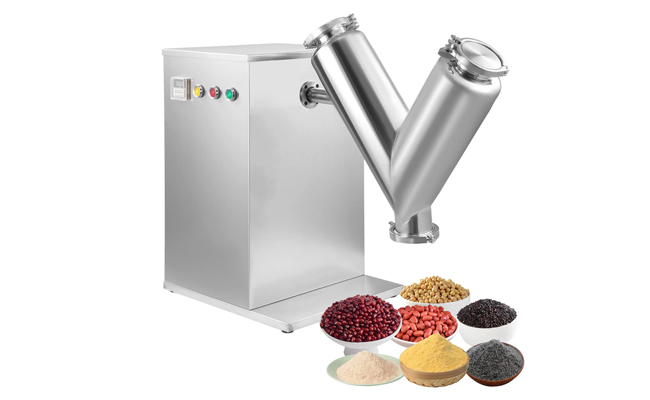BS-260G Horizontal Band Saw
Cutting Capacity :
Powder mixing is a crucial process in industries like pharmaceuticals, food production, chemicals, and cosmetics. Getting the right blend ensures product quality, consistency, and performance. But not all powders mix the same way—different materials require different mixing techniques.
So, what are the three main types of powder mixing, and how do they work? Let’s break it down.

1. Convective Mixing (Bulk Movement Mixing)
How It Works
Convective mixing involves moving large groups of powder particles from one place to another using mechanical agitators like blades, paddles, or screws. Think of it like stirring flour and sugar in a bowl—the mixer forces the powders to circulate until they blend.
Best For:
Free-flowing powders
Large batches
Quick mixing
Common Equipment:
Ribbon blenders
Paddle mixers
Planetary mixers
Pros & Cons:
✔ Fast and efficient for coarse powders
✔ Works well with large volumes
✖ Less effective for fine, cohesive powders (can leave clumps)
2. Shear Mixing (Forced Deformation Mixing)
How It Works
Shear mixing applies force to break apart clumps and force particles to slide against each other. It’s like kneading dough—pressure separates and redistributes particles for a smoother blend.
Best For:
Sticky or cohesive powders (like talc or cocoa)
Powders that tend to clump
High-precision mixing
Common Equipment:
High-shear mixers
Planetary mixers with specialized blades
Pros & Cons:
✔ Breaks down agglomerations effectively
✔ Great for thick, paste-like mixtures
✖ Can generate heat, which may affect sensitive materials
3. Diffusive Mixing (Random Motion Mixing)
How It Works
Diffusive mixing relies on gentle, random particle movement—often through tumbling or vibration. Instead of forced stirring, powders blend naturally as they flow past each other. Imagine shaking a bag of trail mix—the nuts and raisins slowly mix without aggressive stirring.
Best For:
Fragile or easily damaged powders
Fine, dry powders (like spices or pharmaceuticals)
Blending powders with different densities
Common Equipment:
V-blenders
Double-cone blenders
Tumble blenders
Pros & Cons:
✔ Gentle on delicate powders
✔ Excellent for uniform blending over time
✖ Slower than convective or shear mixing
Which Type of Powder Mixing Should You Use?
Choosing the right mixing method depends on your materials:
Free-flowing powders? → Convective mixing (ribbon blender)
Sticky or clumpy powders? → Shear mixing (high-shear mixer)
Fine or fragile powders? → Diffusive mixing (V-blender)
Many industrial mixers combine these methods for better results. For example, a high-shear granulator might use both shear and convective mixing to break clumps while ensuring even distribution.
Understanding the three types of powder mixing—convective, shear, and diffusive—helps manufacturers optimize blending for better product quality. Whether you’re mixing spices, pharmaceuticals, or industrial chemicals, picking the right technique ensures efficiency and consistency.
Need help selecting the best mixer for your powders? Consider particle size, cohesiveness, and batch size to make the right choice.
Keywords: powder mixing types, convective mixing, shear mixing, diffusive mixing, powder blending methods, industrial powder mixers, best powder mixing technique
Cutting Capacity :
Cutting Capacity :